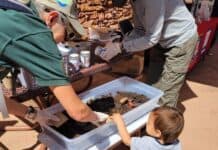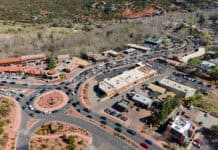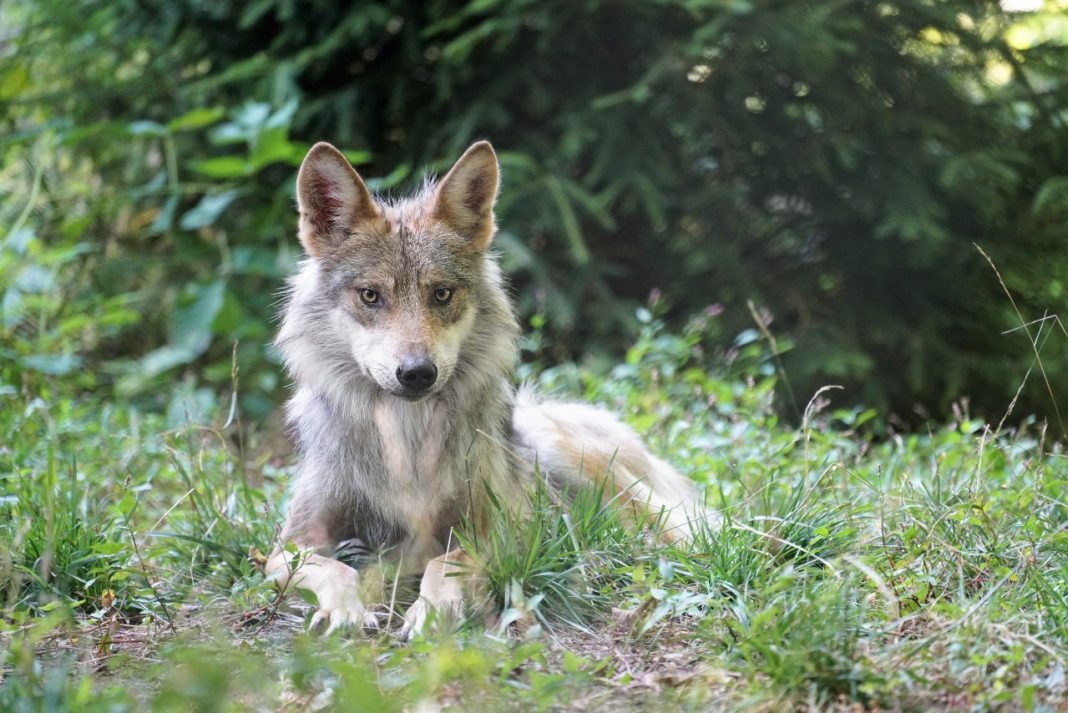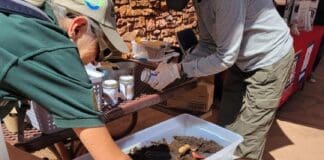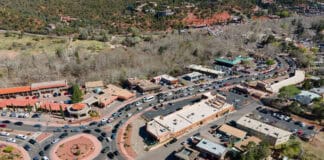A young Mexican gray wolf’s summer adventure outside Flagstaff came to a close last week, and wildlife officials hope he’s a bachelor in paradise in his new home in the core Mexican wolf recovery area in eastern Arizona.
Anubis, as the wolf was named by seventh-grade students, left his birth pack in New Mexico in May and traveled 400 miles to the Coconino Plateau above Sedona — part of natural “dispersing” behavior to find a mate.
The Sedona Red Rock News reported about Anubis in June, when rare national forest closures gave the young wolf the full run of Coconino and Kaibab National Forests. This past winter, Anubis was captured and fitted with a radio collar allowing both wildlife officials and the public to track his whereabouts.
During his stay in Northern Arizona, Anubis survived extreme heat and drought, forest fires and a month with record rainfall. He also eluded at least one capture attempt early in the summer, when extreme heat hampered an operation involving a helicopter.
But on Aug. 15, a biologist successfully darted the 1-and-a-half-year-old wolf before officials transported and released him in Apache National Forest in eastern Arizona, “alive and well,” according to Jim deVos, Mexican wolf program coordinator for Arizona Game and Fish Department.
deVos said the wolf crossed I-40 at least three times and was spotted by six people during his stay.
Though far from home and close at times to populated areas, the “cunning” wolf, as wolf conservation advocate Emily Renn described him, managed to stay out of harm’s way for four months.
Other Mexican wolves that have dispersed to the area have not fared so well. Multiple Mexican wolves have been struck by cars near Flagstaff and one was shot outside Williams.
deVos said the decision to relocate Anubis took into consideration “what’s best for the wolf, what’s best for the public, and what’s best for [Mexican wolf] recovery.”
The agency underscored the wolf’s frequent proximity to low density residential areas as a particularly concerning behavior.
“He’d go from one area to another area, [and] no matter where he moved, he homed in on residential areas,” deVos said. “He just would not stay away from housing developments.”
Anubis was healthy at capture, deVos said, and he hopes that the young male, now that he’s in an area with more wolves, “finds a mate and makes babies,” contributing to the species’ recovery.
“I think it’s a good outcome,” he said.
deVos said the agency also weighed the views of wolf advocacy groups like Grand Canyon Wolf Recovery Project, based in Flagstaff, which argued for letting Anubis stay in the area.
Renn, the group’s executive director, said she was “sad and disappointed” to learn of Anubis’ relocation. She was also skeptical of the need to relocate Anubis. She had not heard of the wolf interacting with people or domestic animals. She said there was a positive response from the local community, too.
“People thought it was cool that a rare animal was in the forest,” she said.
For Renn, Anubis’ summer in Flagstaff provides evidence that the area is part of the wolves’ natural habitat and should be part of their long-term recovery. The public will have a chance to comment on Mexican wolf management when the U.S. Fish and Wildlife Service releases a draft environmental impact statement for wolf recovery, possibly this fall.
Renn pointed out that Anubis ’ four-month sojourn may have left a more concrete legacy around Flagstaff — scent marks.
“The longer they stay here, the more they leave a scent mark for other wolves,” which may attract other dispersing wolves, she said.


